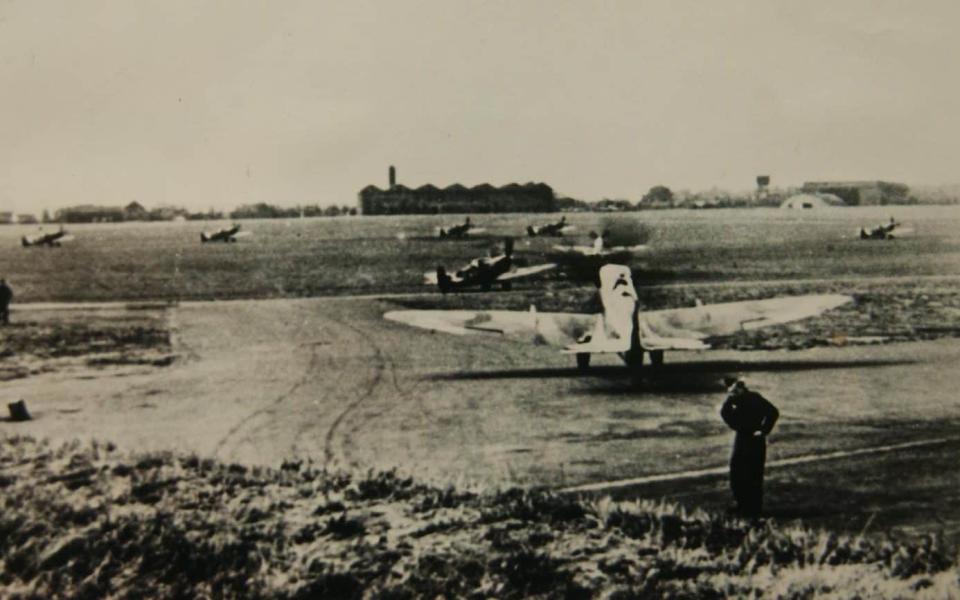How friendly fire during Second World War triggered the slow death of the pound in your pocket

On Sept 6 1939, just three days after the declaration of war, a squadron of Hurricanes was scrambled from North Weald, Essex. Soon after, two reserves followed. But somehow, once aloft this pair were mistakenly identified as enemy aircraft.
Spitfires took off from Hornchurch and shot them down. Frank Rose survived. But Montague Hulton-Harrop, the other pilot, died, becoming the first British fighter pilot to lose his life in the Second World War – killed by friendly fire.
The Battle of Barking Creek, as it became known, intensified a secret project to develop a refinement that would allow radar operators to sort the anonymous dots on their screens into friendly and enemy craft.
Under the leadership of Robert Alexander Watson-Watt, radar’s creator, a transmitter was built into Allied aircraft which broadcast a certain signal back, proclaiming it friendly. It became known as Radio Frequency Identification, or RFID.
Exactly 80 years on, it is now clear that the Battle of Barking Creek had another victim – a victim Watson-Watt could never have anticipated. Cash.
RFID is the technology inside contactless debit cards, albeit now slim enough to fit into a sliver of plastic. But it still does the same job, identifying the bearer via radio waves. And contactless is the technology which, in 2017, saw cash dethroned as our payment method of choice.
A decade ago, cash accounted for six in 10 UK payments. Today, just over a quarter. A decade from now, according to UK Finance, that will fall to a tenth.

We are already seeing the effects – because cash is expensive. Printing it, distributing it, withdrawing it, spending it, receiving it, banking it, counting it, securing it and withdrawing it again, over and over, costs, well, money. Lots of it.
Such a costly network only makes sense when lots of people use cash.
Almost 1,000 bank branches a year are closing. When it comes to cash machines, the attrition rate is about 400 per month, and accelerating. At the end of 2017, there were 68,610 UK ATMs. Just 12 months later the figure had fallen to 63,160.
Yet ATMs are overwhelmingly the way people access cash. The number of ATM withdrawals is more than 10 times that of counter withdrawals and in-store cashback transactions combined. Without cash machines, there is precious little access to cash.
Such a pronounced, sudden change has led to widespread predictions of Britain becoming a cashless society. And of a large minority of cash users – about 2.2 million – being excluded from the method humanity has used to buy and sell since coins were developed in China 3,000 years ago.
It’s not just exclusion. Digital payments require a digital infrastructure. Banks send passcodes to online accounts via text message, but not all rural areas have a mobile signal. Payments systems themselves are not infallible.
In June 2018, Visa suffered a Europe-wide collapse, preventing cardholders making purchases. “Cash is the only payment method not reliant on digital infrastructure,” says the consumer group Which?
“We are concerned that without it as a backup, the move towards paying by card and contactless could represent a systemic risk to the economy as a whole.”
And then there is data. Digital transactions leave a data trail that allows you to be traced and tracked, your preferences logged and analysed and, ultimately, sold.
“Cash forgets instantaneously,” says Dr Tatiana Cutts, at LSE’s department of law. But when we use digital money, the footprint is indelible. It doesn’t matter whether you use bitcoin or blockchain, it’s always possible to demonstrate who we are.”
Hence the sight of anti-Beijing protesters in Hong Kong forming long queues in front of ticket machines to pay by cash. It’s safe to assume that almost all possess Octopus smart cards with which they can “touch in” to travel. But “touching in” allows them to be identified as heading to a protest.

It is a combination of concerns that has propelled cash up the agenda at the Treasury. So loud is the clamour that the Government this year vowed it would be “safeguarding access to cash for those who need it” and set up the Joint Authorities Cash Strategy Group (JACS) to work out how to do so. Its members are the Treasury, Bank of England, Payments Systems Regulator and Financial Conduct Authority.
But no one pretends that even state intervention will halt, or reverse, current declines. “Your kids will not think about cash,” says Michael Rolph, co-founder of Yo-yo wallet, an app that allows its two million users to pay and collect loyalty points and rewards from retailers, while simultaneously providing data to retailers.
The incentive to drive and capitalise on that transformation is, he says, monumental. And it’s happened before. From nowhere, card payments firms revolutionised transactions in the last half-century. Today, Visa and Mastercard are worth $650bn (£530bn ) between them.
“I’m not crazy,” says Mr Rolph. “The company that gets this right will be worth over $1 trillion. In 20, 30 years, all money is going to be digital.”

 Yahoo Finance
Yahoo Finance 